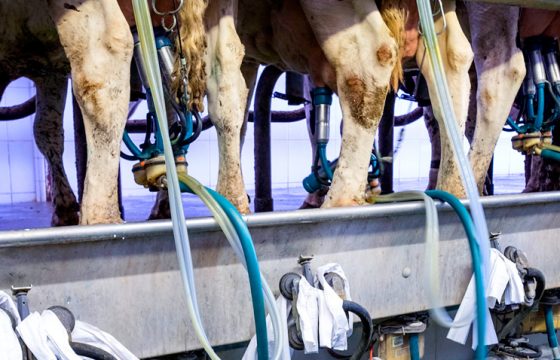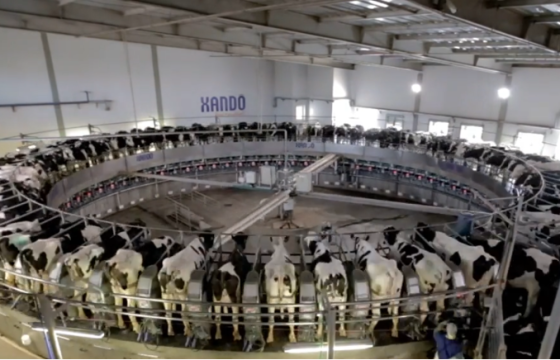California Mastitis Tests vs SCC: What are the benefits and limitations of each method?
Somatic Cell Count (SCC) and California Mastitis Tests (CMT) are two of the most widely used tools for controlling mastitis in cattle, as they help us to identify the infection status of a cow at an individual level. In this post we’ll carry out an in-depth analysis of these two methods, identifying the benefits and limitations of each method so you can decide which one suits you best!
1. Mastitis in cattle detection tests:
This kind of tests vary in their ability to detect infection or absence of infection, but let’s see how:
- California Mastitis Tests (CMT): This kind of tests are relatively insensitive and can generally not detect SCC below 350 to 400,000 cells/ml and gives results in the form of negative, +, ++ or +++.
- Somatic Cell Count in milk (SCC): Individual Cow SCC determination is most commonly performed on composite samples (comingled milk from all 4 quarters) and gives results in 1,000s cells/ml.
Unlike CMT, SCC determination gives a number of somatic cells count in a milk sample with varying degrees of repeatability depending on the range of the result with very low and very high results being less repeatable.
All diagnostic tests have the inherent sensitivity (Sn), avoiding of false negatives [100 – false negative %] and specificity (Sp), avoiding of false positives [100 – false positive%].

2. The importance of thresholds:
Thresholds will indicate infection status, values above these an infected cow and below these, likely uninfected:
Internationally a threshold of 200,000 cells/ml is widely accepted and is useful for epidemiology as it gives a balanced Sn & Sp making similar “mistakes” in both directions, which is useful when used on large datasets particularly when studying new infection and cure rates within a herd over time.
Usually this threshold is used to classify subclinical mastitis, not needed with clinical mastitis in cattle.
The use of a threshold of 200,000 cells/ml results in approximately a 75% sensitivity and 75% specificity but will vary with all the factors that impact SCC such as pathogen and stage of lactation but also the BMSCC of the herd ie prevalence of infection.
Predictive values (Predictive +ve and predictive –ve) will vary from herd to herd and there will be a reduced sensitivity in higher BMSCC herds and a reduced specificity in lower BMSCC herds.
Effectively when used as a working threshold across many herds 75% of cows with an infection have a SCC >200,000 cells/ml and 75% of uninfected cows have a SCC <200,000 cells/ml.
3) When changing the SCC threshold is necessary?
Different populations justify different thresholds:
a. When is using lower threshold of SCC justified?
This will improve sensitivity at the expense of reduced specificity, so we will be more certain about a negative result (i.e. a SCC below the threshold) is uninfected.
Maybe needed in:
- Younger cows e.g. heifers.
- Herds with low BMSCC.
Also may be useful when:
- Running a clean group within a herd: Using a lower threshold reduces the chance of infected cows being in the clean group although clean cows may end up in the infected group. This approach does preserve the clean group albeit at the potential expense of a few clean cows.
- Using a selective or targeted dry cow therapy protocol: Dry period treatment cure rates are generally higher than lactation treatment cure rates and so all potentially infected cows need to be treated with antibiotic dry cow therapy at drying off. By using a lower threshold some uninfected cows may be treated with antibiotic DCT (although this is what happens to ALL cows in herds using blanket therapy), and we’ve seen a huge movement pushing to reduce antibiotics in some countries.
b. When is using higher thresholds of SCC justified?
This will improve specificity at the expense of reduced sensitivity Ie be more certain a positive result (ie a SCC above the threshold) is infected.
Maybe useful when:
- Selecting cows for sampling or treatment. Avoid wasting time and money sampling or treating cows which may not be infected with a major pathogen. However some infected cows could be missed.
Content originally created for “the Mastipedia”.
Author: Andrew Biggs, Consultant on mastitis in cattle.



2 Comments
canadian pharmacies online prescriptions https://otoplenie-castnogo-doma.webnode.com.ua/l/kotel-dlya-otopleniya-chastnogo-doma/
You actually said that exceptionally well.
Thanks!
Regards
Comments are closed.